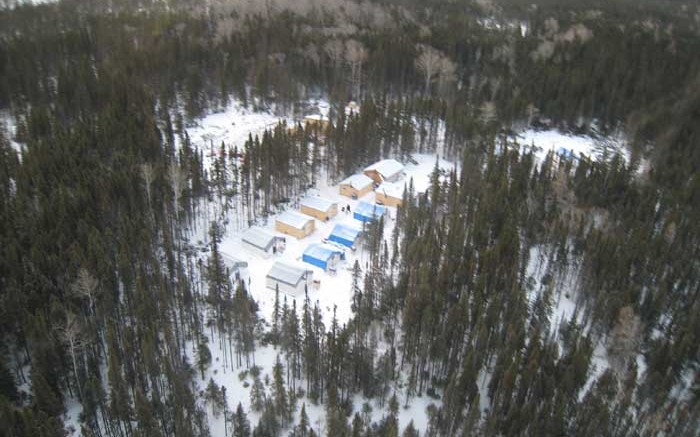VANCOUVER — Five years ago, when explorers discovered chromite in northern Ontario’s James Bay lowlands region, the metal’s primary finished form — ferrochrome, a key steelmaking ingredient — was worth US$6 per kg, or US$2.70 per lb.
Soon several companies had outlined significant chromite and other base-metal deposits in the area and the provincial government was extolling its economic potential, which became known as the “Ring of Fire.” Then-premier of Ontario Dalton McGuinty even proclaimed the area had “the potential to rival Alberta’s oilsands.”
Today the governing Liberals still call the area a “multi-generational economic opportunity for this province, with known mineral potential worth $60 billion.”
However, that number depends on several factors. One is the price of ferrochrome, which has spent the last three years drifting downwards to trade today at US$2.51 per kg, or US$1.05 per lb. The second and arguably more important factor is that minerals in the ground only offer theoretical value — a mine must be developed to turn any of that potential into tangible value.
Unfortunately for those promoting the Ring of Fire as Ontario’s next mining camp, the player with the biggest, most advanced project has just halted work indefinitely because the obstacles to developing a profitable mine kept piling up.
Cliffs Natural Resources (NYSE: CLF) has suspended work on its Chromite project, where the iron ore and coal major had planned to spend $3.3 billion building a mine, plus an associated ferrochrome processing facility near Sudbury.
The project encompasses three adjacent deposits — Black Thor, Big Daddy and Black Label — that Cliffs acquired in a series of deals between 2010 and 2011. Cliffs focused on Black Thor, where the chromite resource starts at surface and can be open-pit mined. The company engineered the mine and began the permitting process, while negotiating with First Nations over environmental concerns and value sharing.
Blockades from at least six First Nations groups stole the spotlight in the Ring of Fire, where several other resource companies were also advancing projects. However, it turns out Cliffs’ most surprising challenge came from its partner, KWG Resources (TSXV: KWG).
KWG discovered the Big Daddy deposit in 2008, along with partner Spider Resources. The next year KWG approached Cliffs, which became a project partner. With approval from its partner, KWG staked claims along a string of sand ridges running south from Big Daddy, with the intent to use the land for a railway in the future.
Since the Ring of Fire region is mostly boggy, swampy terrain, this ridge of high ground is perhaps the only place to build a road or rail line connecting the isolated Ring of Fire with infrastructure in the south. The foresight to pick up the rail or road route worked out well — until KWG and Cliffs diverged on the details.
Cliffs owns Black Thor outright, but remains partnered with KWG at Big Daddy. As it formulated its Black Thor development plans, Cliffs backtracked on its support for a rail line, arguing that a road made more sense. KWG disagreed and, since the ridge of high ground is not wide enough for a road and a rail line, refused to give consent for Cliffs to use the route.
Cliffs applied to Ontario’s Mining and Lands Commissioner (MLC), asking the regulator to overrule KWG’s objections to its surface plans. In September, the MLC denied that application, affirming that a mining claim holder — such as KWG — has prior right-of-surface use for all aspects of mineral exploration and development.
“Without access to the surface lands to develop the needed infrastructure, there is no project,” Cliffs said at the time. “Our proposed development has the scale needed to develop road access, which would be a catalyst for other smaller mining opportunities in the Ring of Fire. Cliffs is disappointed in this decision, but beyond our project it is clearly an issue for anyone interested in seeing these opportunities in the Ring of Fire becoming realities.”
Denial from the MLC was another setback for Cliffs at Chromite. Already struggling to manage First Nations relations and seeing no signs of chromite prices rebounding, in June Cliffs suspended environmental-assessment activities on-site. Now the project has been halted entirely.
“The company determined that it will not allocate additional capital for the project given the uncertain timeline and risks associated with the development of necessary infrastructure to bring this project online,” Cliffs said in a statement. “Technical project work — including feasibility study and development, and exploration activities — are being halted, and there is no restart date planned.”
The Ontario government was quick to voice its disappointment over the decision, though it promised to assist in the development of the Ring of Fire once First Nations issues are resolved.
Opposition politicians provincially said the government was to blame for being too slow in extending support.
Only recently Northern Development and Mines Minister Michael Gravelle proposed a corporation that would bring First Nations, mining companies, and provincial and federal partners together to “settle divergent interests and get back to making this development happen.”
Too little too late, according to critics. “For years now all players, from industry to First Nations to municipalities, have spoken out on the need for a strategy on infrastructure, electricity prices, resource sharing and employment opportunities, yet the Liberals have dropped the ball,” said NDP Northern Development and Mines critic Michael Mantha.
The mine planned for Black Thor would have produced 600,000 tonnes of ferrochrome and 1 million tonne of chromite in concentrate annually. Initial production had been planned for 2015.
On news of the Chromite project work stoppage, Cliffs’ share price fell US80¢ to close at US$26.43. The company has a 52-week trading range of US$15.41 to US$40.40, and has 153 million shares outstanding.
Cliffs is a major iron ore and metallurgical coal producer, with operations in North America and Australia.


Be the first to comment on "Cliffs shelves Ring of Fire chromite project"